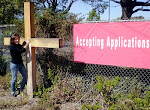Mark 1:21-28 Jesus and his disciples went to Capernaum; and when the sabbath came, he entered the synagogue and taught. They were astounded at his teaching, for he taught them as one having authority, and not as the scribes. Just then there was in their synagogue a man with an unclean spirit, and he cried out, "What have you to do with us, Jesus of Nazareth? Have you come to destroy us? I know who you are, the Holy One of God." But Jesus rebuked him, saying, "Be silent, and come out of him!" And the unclean spirit, convulsing him and crying with a loud voice, came out of him. They were all amazed, and they kept on asking one another, "What is this? A new teaching-- with authority! He commands even the unclean spirits, and they obey him." At once his fame began to spread throughout the surrounding region of Galilee.
Reflection The contemporary philosopher Ken Wilber suggests a way to understand the stages of of I, We and All of Us moral develpopment as evolving states of body, mind or spiritual consciousness. In the body centered state of consciousness we identify with our physical needs and desires. Hunger, lust, emotions drive our behavior. We experience other people as objects to satisfy our desires. There is every chance you might hear us saying, “This is mine,” or “I can’t help it. It is just the way I am.”
In the next state of consciousness, the mind, we begin to develop our cognitive capacity to make connections with others. People are no longer simply objects to satisfy our desires. We are able to step into the other person’s shoes and begin to establish relationships based on shared interests, values, traditions or ideals. At the same time that we acquire the capacity to make meaningful connections and experience “we,” we also develop a shadow side as we decide who is part of we and who is not. This is the state of consciousness that drives 70% of our world’s behavior today. Hope to grow beyond this state lies in the invitation to become self aware and ask ourselves, “Who are we leaving out? Who are we marginalizing?”
When we begin to ask such questions, the evolution of our consciousness continues to expand into the spiritual “all of us” perspective. Here we affirm the interconnected web of creation. In Wilber’s words, we discover “the commonwealth of all beings…(this is) the move from ethnocentric to worldcentric, and is ‘spiritual’ in the sense of (being concerned with) things common to all sentient beings.” (http://www.dailyevolver.com/a-primer-on-integral-theory/#sthash.YYxKq3wG.dpuf)
I believe the ‘new teaching’ in the synagogue two thousand years ago is still new for many of us as we stretch into world centric spiritual consciousness that tolerates ambiguity, holds opposites together, and endures the tension between diversity and unity.
The ‘new teaching’ calls us into an “all of us” state of spiritual consciousness wherein we are compelled by truth, beauty and goodness. You see truth, beauty and goodness are qualities of God. They are also qualities of all sentient beings. Which is to say, in worldcentric all of us state of consciousness we no longer experience ourselves as isolated, independent individuals or groups of individuals. We experience ourselves in union and unity with one another and God and the qualities of truth, beauty and goodness naturally flow through us.
Let this be our hope and our prayer, to grow beyond the loud shouts and convulsions of I or we, body or mind consciousness into the spiritual state wherein all of us are free to be.
If you found this post to be meaningful please share with friends by clicking on icons below. Thank you.



